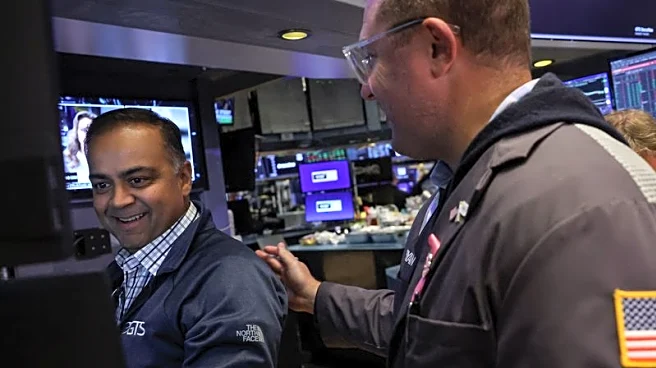What's Happening?
One year after President Trump's second election victory, the S&P 500 has increased by 13%, although it has underperformed compared to Japan's Nikkei and China's CSI 300, which have risen 27% and 16% respectively.
Barclays analysts note that historically, the second year of U.S. presidential terms often sees higher volatility and lower equity returns, particularly as midterm elections approach. This pattern was observed during Trump's first term, where trade war rhetoric and Federal Reserve policies influenced market performance.
Why It's Important?
The performance of U.S. equities is crucial for investors and the broader economy, as it impacts consumer confidence and spending. The potential for increased volatility could affect investment strategies and economic stability. As midterm elections approach, political uncertainty may further influence market dynamics. Stakeholders, including investors and policymakers, must navigate these challenges to maintain economic growth and stability.
What's Next?
As midterm elections draw closer, market volatility is expected to increase, potentially impacting equity returns. Investors may need to adjust their strategies to mitigate risks associated with political uncertainty. Policymakers might focus on stabilizing economic conditions to support market confidence. The Federal Reserve's monetary policy decisions will also play a critical role in shaping market outcomes.













